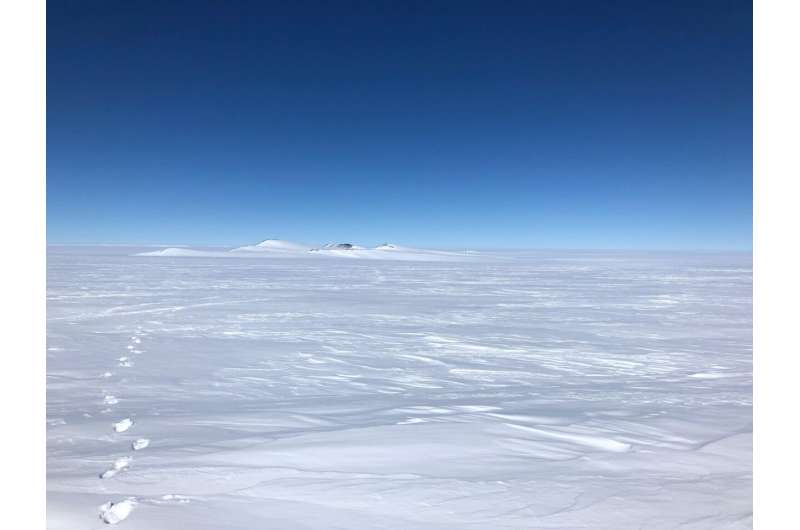This article has been reviewed according to Science X's editorial process and policies. Editors have highlighted the following attributes while ensuring the content's credibility:
fact-checked
trusted source
proofread
Scientists improve the accuracy of weather and climate models

Scientists from EPFL and the WSL Institute for Snow and Avalanche Research SLF have developed a program that improves the accuracy of a widely used weather forecasting model by incorporating surface phenomena that weren't previously taken into account.
Given the challenges associated with climate change and the energy transition, it's essential for weather and climate forecasters to be able to accurately predict what happens to snowfall. But most forecasting models used today don't factor in certain aspects of snow—and therefore lack accuracy. For instance, many of them model snow cover as a single layer when, in fact, it's known that every snowfall will create a separate layer with separate properties.
For over 20 years, SLF and EPFL have been further developing a software program called SNOWPACK, which describes complex, snow-related processes. These include the albedo effect, which is the reflection of solar radiation on the snow cover; sublimation, which occurs when ice transitions directly to a vapor state upon contact with dry air; the insulating properties of snow; surface-level snow clouds; and blowing snow near the ground. SNOWPACK is a sophisticated program used worldwide to predict for example avalanches or calculate present or future snow water resources.
Improving weather forecasts
Today, a team of EPFL and WSL scientists have coupled SNOWPACK with the Weather Research and Forecasting (WRF) model, which is one of the world's most widely used forecasting models, to create a new modeling framework for cryospheric regions, called CRYOWRF. With this new program, the scientists were able to improve the accuracy of snow mass balance forecasts by an average of 10% to 20%, while pointing out that sublimation of blowing snow is most likely higher than previously modeled. They tested CRYOWRF in three areas with diverse conditions: two in Antarctica and one in the Swiss Alps.
The team's findings have just been published in Geoscientific Model Development. CRYOWRF could one day be incorporated into climate models around the world, but in the meantime, MéteoSuisse is planning to add features of the model to ICON, their forecast model. "We're laying the groundwork for the next generation of weather forecasts," says Michael Lehning, head of the Laboratory of Cryospheric Sciences (CRYOS) at the School of Architecture, Civil and Environmental Engineering (ENAC) and the study's corresponding author.
From drinking water to electricity
The cryosphere consists of regions of the Earth where the ground surface is covered by snow and ice for a substantial period of the year. Studying the cryosphere is vitally important for scientists since it modulates the energy and water budget of the Earth system. What's more, these regions hold 80% of the freshwater on Earth—Antarctica is the largest store, with 90% of the freshwater ice mass.
At a regional scale, and especially in Switzerland, snow-cover dynamics play a significant role in water resources for agriculture and hydropower. Scientists also need to carefully monitor the melting phase of snow cover in order to prevent hazards such as spring floods and landslides. In countries like Switzerland with a well-developed ski industry, snow modeling is used extensively to guide the planning and management of ski assets and, more importantly, to predict avalanches.
The videos were shot between 2017 and 2020 by the CRYOS lab team in the surrounding of the Princess Elisabeth station (PEA) on Queen Maud Land in East Antarctica. The goal is to collect data on snow drift and redistribution processes and associated processes such as sublimation from the snow or ice surface and the drifting particles. These data are used to quantify associated mass and energy fluxes and also serve as validation data for simulations with numerical snow models, such as the CRYOWRF model.
More information: Varun Sharma et al, Introducing CRYOWRF v1.0: multiscale atmospheric flow simulations with advanced snow cover modelling, Geoscientific Model Development (2023). DOI: 10.5194/gmd-16-719-2023
Provided by Ecole Polytechnique Federale de Lausanne





















